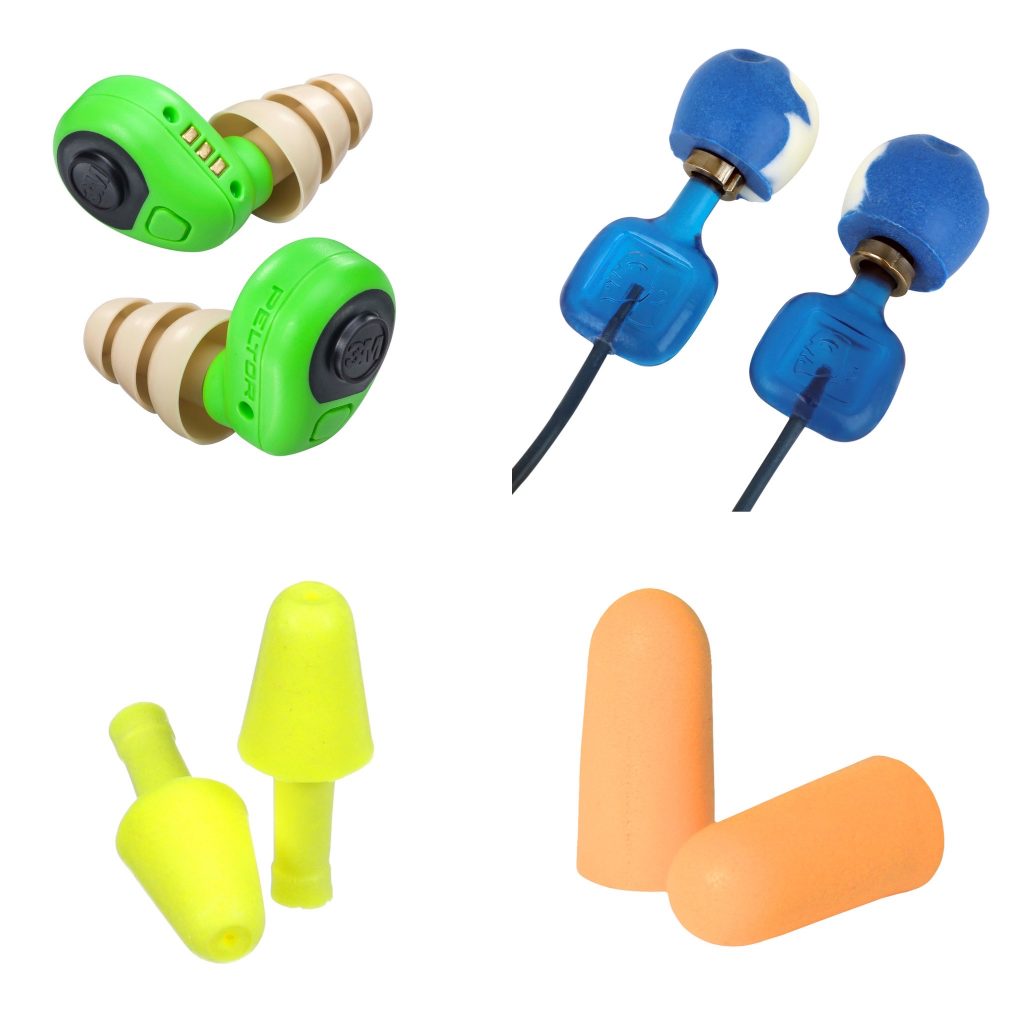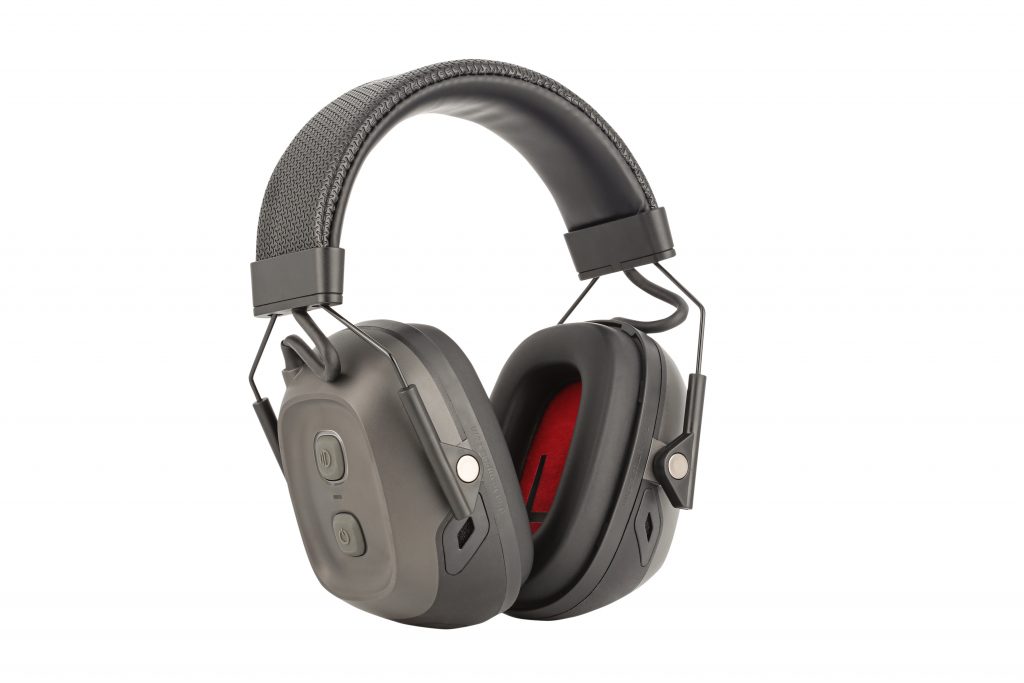
Ear protection in a physically distant time
October 19, 2020
By
Meagan Gillmore
Hygiene, comfort critical in purchase and use of earplugs, earmuffs

Clockwise from top left: 3M’s PELTOR electronic earplugs EEP-100; Honeywell’s TrustFit Trak; Radian’s Evader 33 disposable foam earplugs; 3M’s E-A-R flexible fit earplugs. (Photos submitted)
As workplaces continue to plan for safe and hygienic operations, hygiene and comfort need to be strong considerations when purchasing and using earplugs and earmuffs for hearing protection.
“Overall, there’s a more thoughtful approach to hygiene,” said Marc Kirsch, product marketing manager at Honeywell Hearing for Honeywell in Charlotte, N.C.
More workplaces are making sure that each worker has their own hearing protective equipment, or buying large packages of individually wrapped earplugs, he said.
Hygienic concerns are also changing which earplugs customers prefer to buy.
Push-to-fit earplugs are becoming more popular, according to Bev Borst, senior health and safety specialist for 3M Canada’s personal safety division in London, Ont. Users don’t have to roll down the foam on the earplug to insert them.
“They’re easy to insert by not touching the tip,” she said. “Push-to-fit earplugs allow for nice, clean, comfortable protection.”
The earplugs can be cleaned by wiping down the foam tip with a dry cloth and re-used, said Borst.
Honeywell’s TrustFit products can also be inserted without having to roll down the foam, said Kirsch.
“You don’t have to roll down the foam or touch it,” he said. “You can put it in while you have gloves on. You don’t have to worry about touching the ear pod, and you can push it right into your ear.”
Many workers are opting for hearing protection that hangs around their neck when they’re not using it, said Mary Padron, a senior marketing and communications specialist at Radians in Memphis, Tenn.
“That means you don’t have to take your hearing protection and lay it on a surface,” she said, noting this can keep the equipment cleaner for longer.
Ear protection during COVID
More workplaces are investing in hearing protection equipment that allows employees to communicate clearly while remaining physically distant.
COVID-19 has resulted in increased purchases of earplugs and earmuffs that allow two-way communication between workers and supervisors, said Borst.
Some products are connected to radios; others have external microphones for communication and monitoring the sounds in the environment.
The 3M PELTOR Electronic Earplug, EEP-100 is an electronic earplug that “allows wearers to still hear the ambient noise around them” while communicating with others, said Borst. This product works best in settings where there’s continuous noise between 90 and 95 decibels, such as manufacturing facilities.
Technology is also enabling employers to see the specific dangers that workers are
facing, and address those hazards quickly. With Honeywell’s VeriShield Smart Hearing Solution, safety managers can see what risks to hearing loss their workers are experiencing.
“It’s more of a headset than your standard earmuff,” explained Kirsch. “It actually measures the personalized hearing loss prevention of an individual worker.”
The headsets reduce dangerous noise levels and allow wearers to communicate with others. The headsets also collect data about noise levels and send that data to Honeywell’s cloud-based storage.
Supervisors can use Honeywell’s VeriShield mobile app to view the data and observe patterns. This can show when and where workers are most at risk. Prevention plans can be made quickly when the problems arise. The headsets also send alerts if they are not being worn properly.
Personalized equipment doesn’t necessarily have to be high-tech.
“Another popular trend is custom-molded earplugs for personalized hearing protection,” said Padron.
The earplugs are made from a material that, at first, feels like silly putty. It hardens as it molds to an individual’s ear, and keeps that shape even after being washed, said Padron.
“They are a permanently molded plug,” she said, noting that they are ultimately less expensive than reusable earplugs because, although they cost more to buy, they can be used more times than disposable earplugs. The earplugs can last for years.
Radians sells a Custom Molded Earplugs case and lanyard so users can wear them around their necks.
These earplugs are especially popular with younger workers who are used to sleek earbuds and may not want to wear bulky industrial earmuffs, said Padron, noting younger workers are also more likely to buy brightly coloured earplugs.
Workplace, worker fit

Honeywell’s VeriShield smart hearing solution (VSHS).
(Photo submitted)
Bright colours can also increase safety, according to Padron. First, bright earplugs are easier for safety managers to see. This helps with ensuring worker compliance.
Bright blue earplugs are especially popular in food manufacturing, she said, because they’re easier to find if they fall into products. Radians has metal-detectable blue earplugs that have metal embedded into the plug so they can be detected easily.
For hearing protection to work well, it needs to be inserted properly. But not all workers insert earplugs with two hands, as described by safety instructions, said Borst.
“All earplugs require the use of two hands to properly insert them. That’s how workers are instructed, and that’s how the noise-reduction rating is calculated.”
3M’s new E-A-R Flexible Fit HA Earplugs can provide hearing protection, even when they’re inserted with only one hand, she said.
The company tested the product on workers who inserted it by using one hand, and the earplug provides up to 25 decibels of protection. That rises to 30 decibels of protection when it’s inserted with two hands.
A unique technology, it’s “the first earplug that has a one-hand insertion method with a noise-reduction rating,” said Borst.
Earmuffs typically last longer than earplugs. Workers need to diligently make sure their equipment is in top shape, she said.
“It needs to be inspected,” said Borst. “It needs to make sure that it’s sealing tight against the head of the wearer. If the band starts becoming loose, then you need to look at updating to a new pair.”
Earplugs must properly fit the shape of a worker’s ear canal to be effective.
“There is a risk of damaging your hearing if you’re not wearing it correctly and if it doesn’t fit. I could still put an earplug in right, but it’s possible it may be the wrong size for my ear canal,” said Borst. “There’s people who can put them in just like the instructions say, but it’s not the right size or shape to fit their ear canal.”
Comfort always remains key to ensuring proper protection. If earplugs or earmuffs don’t fit properly, or if they’re not comfortable, workers simply won’t wear them. This increases the dangers to their hearing.
“If they’re not wearing their personal protective equipment, they’re not protected,” said Kirsch, noting Honeywell has increased the adjustability of some of their products, and made them wider to suit various ear sizes.
“People have got to wear it all day long. It’s got to be comfortable,” he said. “But it’s also got to be adjustable to fit their face, whether it’s a big beard or glasses — it’s got to have that adjustability.”
Hearing loss may be common, but it’s not inevitable, said Kirsch. “You can be proactive and you can address hearing loss before it happens.”
“You don’t have to suffer from hearing loss and you can do something about it now.”
Meagan Gillmore is a freelance writer in Toronto.